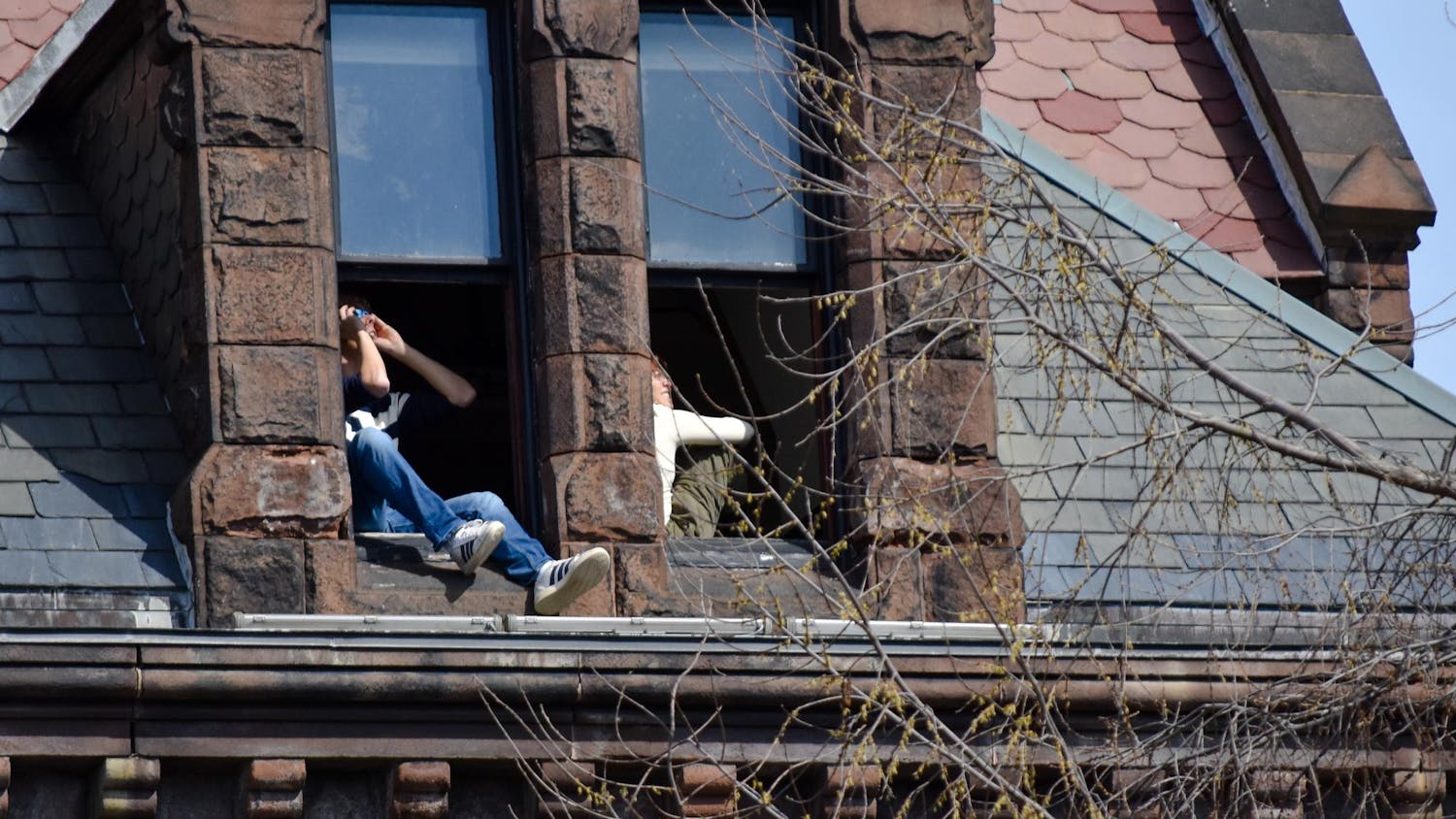Her name is Betsy. Right now, she lives in a garage, but the students who bought her for $200 on Craigslist hope she will one day power a light bulb.
An old, rusty exercise machine, "Betsy" is the brainchild of 12 students working together through an independent study with Senior Research Engineer Christopher Bull. Once the students fully implement their design to modify their existing weight machine, Betsy will do more than help burn calories — she will convert a weight lifter's motion to electrical energy.
The project grew out of the Brown Progress Initiative, an organization Benjamin Mandel '09 founded last year to advance sustainable product design, he said.
The original idea for the project was to build an energy-generating bike, said Chinmaya Kulkarni '11, who had previously built such a machine for an environmental science class.
But Mandel and Kulkarni soon realized that designing an energy-generating bike is far from a new idea, so they decided to build an energy-generating weight-lifting machine instead, Kulkarni said.
"It's a lot more challenging technically, and it's never been done before," he said.
It was too late to propose a Group Independent Study Project, Mandel said, so interested students enrolled in an independent study instead. Better by Design, a Brown-RISD umbrella group that encourages student involvement in socially responsible design, awarded the group a $1,500 grant to support the project.
Mandel recruited friends and members of emPOWER and BPI to join the project. The current group's 12 members represent every class year and even include one graduate student.
"One of the coolest things about the project is that we only have one engineer on the team and she's a chemical engineer," Kulkarni said.
Rather than build a machine from scratch, the group of students — who represent such diverse concentrations as economics and biology — developed a design to modify an existing model.
"All we're doing is taking out the weight stack and putting in a generator and gear system," Kulkarni said. "That part will be our invention."
The machine will "capture the mechanical energy produced by your muscles and convert it to electrical energy," said Gerard Bell '09.
Unlike a traditional leg-extension machine, Betsy will work antagonistic muscle sets, Kulkarni said. The machine's generator will produce resistance for both upward and downward motions, he said.
The upward motion of the machine will exercise a person's quadriceps, said Ben Howard '11, and its downward motion will work the weight lifter's hamstrings.
It was difficult to agree upon a design at first, Howard said. The group considered using magnets and hydraulics before settling on the current design because of its efficiency, he said.
While Bull, the group's adviser, has lent them a generator for the machine, designing a gear system proved to be one of the group's main challenges.
"Going in, we had a more idealistic view," Mandel said, but "we've hit weeks at a time when we were stuck."
For one class, Mandel bought a special $30 "gear systems" K'Nex set as a toy model, he said. "I don't know how instrumental it'll end up being for our design, but it was a fun diversion for a day," he said.
Bull sometimes gave the students engineering demonstrations, Mandel said. But mostly, Bull said, he let the students figure out their own design and was impressed by their
productivity.
The group bought Betsy on Craigslist over a month ago and currently stores her in the garage of an off-campus house of several seniors involved in the project. Though the students had previously removed the machine's weight stack, they only began major modifications this week, Mandel said.
The group is unsure exactly how much energy Betsy will generate, Bell said. Under optimal conditions, Betsy could theoretically generate close to 250 watts of power, he said, but the actual amount will be lower, taking friction and other factors into account.
But because lifting weights is not a continuous motion, a light bulb powered by the machine would flicker on and off, according to Mandel. To provide continuous power, the machine would need a battery or some other way to store energy, he said.
Regardless of how much energy the machine actually generates, the group wants to show that it can be done.
"This is a proof of concept," Kulkarni said. "This is not going to be a perfect machine. It's not going to look slick right away. This is not a finished product."
The class met officially for the last time on Monday, but the group plans to meet multiple times a week for the rest of the semester.
The group's goal of finishing Betsy before the summer is "realistic, but ambitious," Kulkarni said. "Since we're not engineers, a lot can go wrong."
Their plans don't end with Betsy's completion — several of the students are planning to modify an indoor rowing machine they recently bought on eBay, and the group's members are hatching ways to showcase Betsy.
One member proposed using Betsy to light up a Christmas tree, while someone else joked the machine should light a menorah instead.
"I just think a menorah might be more realistic in terms of the power generated," said Michael Groth '09.




